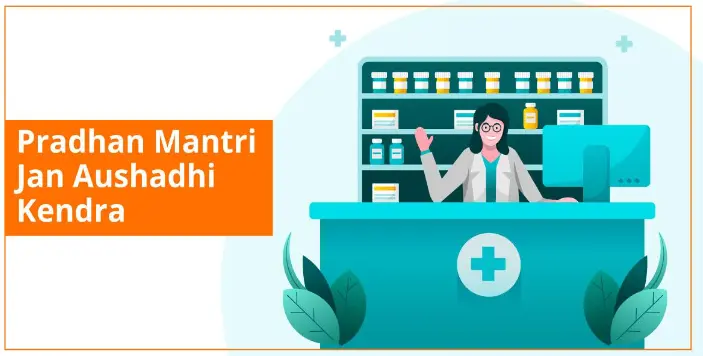Wednesday, 20th March 2024
Peatlands
In News: A recent research reveals that the canals utilized for draining waterlogged peatlands in Southeast Asia are probable centers for greenhouse gas emissions.

Peatlands: An Overview
- Definition: Peatlands are wetland ecosystems where waterlogged conditions prevent full decomposition of plant material, leading to a net accumulation of peat.
- Global Distribution: Peatlands are found in all climatic zones and continents, covering approximately 4.23 million km2, which is about 2.84% of the Earth's terrestrial surface.
- Geographic Concentration: The majority of peatlands are located in boreal and temperate regions of the Northern Hemisphere, particularly in Europe, North America, and Russia, where they develop under high precipitation-low temperature conditions.
- Types of Peatlands: Peatlands encompass landscapes actively accumulating peat, those no longer accumulating and lacking primary peat-forming plants, and areas utilized for economic purposes such as agriculture, forestry, and energy generation.
- Natural State: About 84% of global peatlands are considered to be in a natural or near-natural state.
- Drained Peatlands: Approximately 16% of peatlands worldwide have been drained, accounting for 0.5% of the Earth's terrestrial surface.
- Carbon Storage: Peatlands are carbon-rich ecosystems and the largest natural terrestrial carbon store, storing more carbon than all other vegetation types combined.
- Greenhouse Gas Emissions: Damaged peatlands are significant sources of greenhouse gas emissions, contributing to nearly 5% of global anthropogenic CO2 emissions.
Source: PO
Challenges of Handling Nuclear Waste
In News: India recently inserted the core into its long-delayed prototype fast breeder reactor (PFBR) vessel, marking a significant advancement towards achieving stage II of its three-stage nuclear program, which is powered by uranium and plutonium.
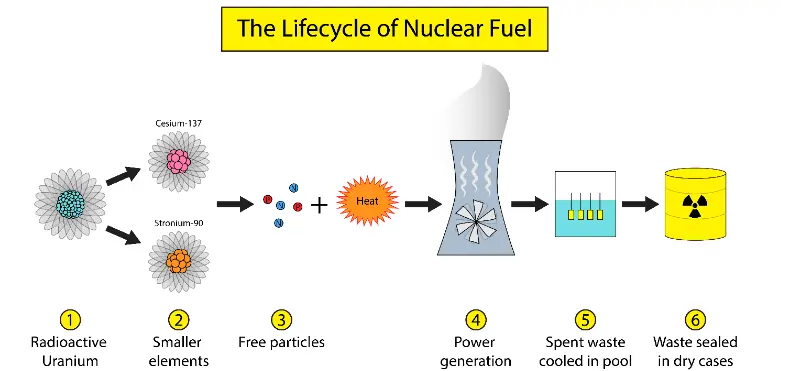
Understanding Nuclear Waste
- Definition
- Nuclear waste is generated in fission reactors when certain atomic nuclei absorb neutrons, resulting in the production of radioactive byproducts that cannot undergo further fission.
- Formation and Characteristics
- When elements like uranium-235 absorb neutrons, they break down into various elements such as barium-144 and krypton-89, along with additional neutrons.
- These byproducts, if unable to undergo further fission, constitute nuclear waste.
- This waste is highly radioactive and poses significant hazards to human health and the environment.
- Management Challenges
- Managing nuclear waste presents significant challenges due to its radioactivity and longevity.
- Spent fuel, the irradiated fuel removed from reactors, remains hazardous for millennia and requires secure storage facilities to prevent environmental contamination.
- Liquid waste treatment facilities are also essential for managing radioactive liquid waste generated in nuclear processes.
Management Techniques
- Storage: Spent fuel is initially submerged in water to cool before being transferred to dry casks for long-term storage. Liquid waste treatment facilities handle radioactive liquid waste, employing techniques such as evaporation and chemical precipitation.
- Reprocessing: Reprocessing involves chemically treating spent fuel to separate fissile material from non-fissile components. This process can yield reusable materials like plutonium and uranium, enhancing fuel efficiency.
- Vitrification: High-level radioactive waste can be immobilized by encasing it in glass through a process called vitrification. This technique prevents leaching and ensures long-term stability.
Challenges and Solutions
- Geological Disposal Concerns: Geological disposal methods, while effective, pose risks of leakage and environmental contamination. Robust containment strategies and stringent regulatory oversight are crucial for ensuring the safety of disposal sites.
- Private Sector Involvement: Encouraging private sector participation can drive innovation and efficiency in waste management technologies. Incentivizing private investment through regulatory frameworks and partnerships can foster technological advancements.
- International Cooperation: Addressing nuclear waste challenges requires global collaboration to share knowledge and best practices. International frameworks for research, development, and regulatory standards can promote responsible waste management practices worldwide.
Way Forward
- Investment in Research: Continued research and development are essential for exploring alternative disposal methods and improving waste treatment technologies.
- Regulatory Oversight: Strengthening regulatory frameworks is critical to ensuring adherence to safety standards and mitigating environmental and health risks associated with nuclear waste.
- International Collaboration: Foster international cooperation to exchange expertise, develop standardized protocols, and promote responsible nuclear waste management practices on a global scale.
|
UPSC Previous Year Questions Prelims (2016) Q. India is an important member of the ‘International Thermonuclear Experimental Reactor’. If this experiment succeeds, what is the immediate advantage for India? (a) It can use thorium in place of uranium for power generation (b) It can attain a global role in satellite navigation (c) It can drastically improve the efficiency of its fission reactors in power generation (d) It can build fusion reactors for power generation Ans: (d) Prelims (2011) Q. The function of heavy water in a nuclear reactor is to (a) Slow down the speed of neutrons (b) Increase the speed of neutrons (c) Cool down the reactor (d) Stop the nuclear reaction Ans: (a) Prelims (2020) Q. In India, why are some nuclear reactors kept under “IAEA safeguards” while others are not? (a) Some use uranium and others use thorium (b) Some use imported uranium and others use domestic supplies (c) Some are operated by foreign enterprises and others are operated by domestic enterprises (d) Some are State-owned and others are privately owned Ans: (b) Mains (2017) Q. Give an account of the growth and development of nuclear science and technology in India. What is the advantage of fast breeder reactor programme in India? |
Source: TH
The Threat of Unauthorized Migration
In News: In 2023, the International Organization for Migration (IOM) reported that a combined total of 8,565 migrants lost their lives on both land and sea routes globally.
International Organization for Migration (IOM) Overview
- Founded in 1951 as the Provisional Intergovernmental Committee for the Movement of Migrants from Europe (PICMME) post-World War II.
- Successive name changes led to its evolution into the International Organisation for Migration in 1989.
- In 2016, IOM became a related organization of the United Nations.
- Currently has 175 Member States and 8 states with Observer status, with India joining as a Member State on June 18, 2008.
- Engaged in crisis management, responding to various global crises throughout history.
Status of Global Migration
- Migration involves the movement of people within countries (internal) or between countries (international).
- According to IOM, migrants constitute 3.6% of the global population.
Major Causes of Migration
- Economic Reasons: Seek better job opportunities, higher wages, improved living standards, and access to essential services.
- Conflict and War: Forced displacement due to armed conflicts, civil wars, and political instability.
- Environmental Factors: Natural disasters and climate change impacts leading to displacement.
- Social and Political Factors: Discrimination, persecution, and lack of freedom driving individuals or communities to seek asylum.
- Urbanization and Rural-Urban Migration: Movement from rural to urban areas for employment and better living conditions.
Challenges Faced by Illegal Migrants
- Physical Risks and Dangers: Illegal migrants face dangers such as treacherous terrains, lack of resources, and violence.
- Legal Status and Rights: Undocumented migrants often lack access to legal rights and face the threat of deportation.
- Discrimination and Xenophobia: Migrants may encounter prejudice and hostility based on their background.
- Trafficking and Exploitation: Vulnerable groups, especially women and children, are at risk of exploitation and forced labor.
Way Forward for Addressing Migration Challenges
- Global Compact for Safe, Orderly, and Regular Migration (GCM) Implementation
- Implementing the objectives and commitments outlined in the GCM, a UN-led framework for addressing migration challenges.
- Emphasizing a cooperative, people-centred approach involving governments, civil society, and stakeholders.
- Widening Legal and Safe Pathways
- Enhancing legal and safe pathways for migration.
- Including resettlement programs for refugees, family reunification mechanisms, labour migration schemes, and humanitarian visas.
- Reducing reliance on dangerous and illegal routes like Donkey Flights.
- Combatting Human Trafficking
- Strengthening law enforcement and international cooperation to combat human trafficking and smuggling networks.
- Protecting migrants from exploitation and abuse.
- Regional Cooperation
- Fostering regional cooperation among countries of origin, transit, and destination.
- Developing joint strategies for migration management, information sharing, and capacity building.
- Promoting collaboration to address common challenges effectively.
- Assistance to Returnees
- Supporting programs that assist returning migrants with reintegration into their communities.
- Providing access to education, vocational training, healthcare, and psychosocial support to facilitate successful reintegration.
|
UPSC Previous Year Questions Mains (2021) Q. “Refugees should not be turned back to the country where they would face persecution or human right violation”. Examine the statement with reference to the ethical dimension being violated by the nation claiming to be democratic with open society. Mains (2016) Q. Rehabilitation of human settlements is one of the important environmental impacts which always attracts controversy while planning major projects. Discuss the measures suggested for mitigation of this impact while proposing major developmental projects. Mains (2015) Q. Discuss the changes in the trends of labour migration within and outside India in the last four decades. |
Source: TH
Recommendations on Simultaneous Elections
In News: Under the leadership of former Indian President Shri Ram Nath Kovind, the High-level Committee on Simultaneous Elections has proposed simultaneous polls for Lok Sabha, state Assemblies, and local bodies in India, signalling a major electoral reform initiative.
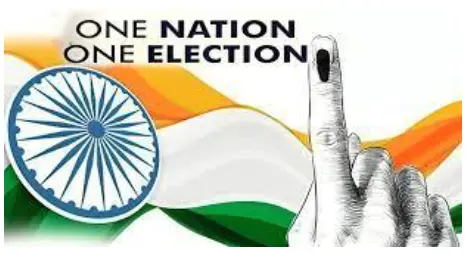
Recommendations of the High-level Committee on Simultaneous Elections
- Transition to Simultaneous Elections
- Amendment to Article 82A: Recommend empowering the President to designate an "Appointed Date" for simultaneous elections to the House of the People and Legislative Assemblies.
- Term Synchronization: Synchronize state assembly terms with Parliament after the designated "Appointed Date".
- Synchronisation of Local Body Elections
- Enact legislation, possibly through Article 324A, to align Municipalities and Panchayats elections with General Elections.
- Electoral Roll Preparation and Management
- Amend Article 325 to enable the Election Commission of India to prepare a single electoral roll applicable to all tiers of government.
- Logistical Arrangements and Expenditure Estimation
- Ensure comprehensive logistical plans and estimates for simultaneous elections by the Election Commission of India and State Election Commissions.
- Impact on Governance and Development
- Emphasize certainty in governance for effective decision-making and sustained development through synchronized elections.
Debates Regarding Simultaneous Elections
Arguments in Favour
- Cost Efficiency: Reduction of recurring expenditure.
- Enhanced Governance: Streamlined electoral process.
- Reduced Influence of Money in Politics: Lessen the role of money in politics.
- Mitigation of Divisive Politics: Reducing the divisive impact of regionalism.
- Enhanced Voter Engagement: Alleviate voter fatigue and increase turnout.
Arguments Against
- Federalism and Regional Representation: Potential centralization of electoral process.
- Cost Implications: Financial burden and ongoing costs.
- Impact on Accountability and Representation: Reduced frequency of electoral accountability checks.
- Required Constitutional Amendments: Amendments needed to various Articles.
- Security Implications: Diversion of security forces from border protection.
Various Other Recommendations Regarding Simultaneous Elections
- Clubbing Elections: Proposals to combine Lok Sabha and State assembly elections.
- No-Confidence Motion: Require accompanying confidence motion for forming an alternate government.
- Bye-Elections: Group bye-elections together and conduct once a year for efficiency.
|
UPSC Previous Year Questions Prelims (2020) Q. Consider the following statements:
Which of the statements given above is/are correct? (a) 1 only Answer: (d) Prelims (2017) Q2. Consider the following statements:
Which of the statements given above is/are correct? (a) 1 and 2 only Answer: (d) Mains (2017) Q.1 ‘Simultaneous election to the Lok Sabha and the State Assemblies will limit the amount of time and money spent in electioneering but it will reduce the government’s accountability to the people’ Discuss. |
Source: PIB
Forest Fires in Nilgiris
In News: In a recent development, the Indian Air Force (IAF) has joined forces with the state forest department to assist in firefighting efforts.

Forest Fires in India
- Meaning
- Forest fires, also known as wildfires, refer to unplanned, uncontrolled, and unpredictable fires in areas with combustible vegetation.
- Causes
- Natural causes include lightning, high atmospheric temperatures, and low humidity.
- Man-made causes encompass agricultural practices like Jhum cultivation and ignition sources such as cigarettes or bidis.
- Frequency and Period
- November to June is considered the forest fire season in India.
- Hundreds of thousands of small and large fires occur annually, with April-May typically being the worst months.
- Approximately 36% of India's forest cover is prone to frequent fires, with 4% extremely prone and 6% very highly prone.
- Most Affected Areas
- Dry deciduous forests are particularly susceptible to severe fires, while evergreen and semi-evergreen forests are less prone.
- Vulnerable regions include Northeast India, Odisha, Maharashtra, Jharkhand, Chhattisgarh, and Uttarakhand.
Forest Fires in 2024
- Recent incidents have been reported in Mizoram, Manipur, Assam, Meghalaya, and Maharashtra.
- Upticks have been observed in the Konkan belt, coastal Gujarat, southern Rajasthan, southwestern Madhya Pradesh, Odisha, Jharkhand, Andhra Pradesh, Karnataka, and Tamil Nadu.
Reasons for Fires in 2024
- Climatic conditions, including high aridity, above-normal temperatures, clear skies, and calm winds, have contributed to increased incidents.
- Southern India experienced exceptionally hot temperatures in February 2024, leading to early availability of dry biomass in forests.
- The prevalence of Excess Heat Factor (EHF) has been higher than normal over western Andhra Pradesh and Karnataka, leading to an increased likelihood of heatwaves.
- The absence of rain and high temperatures have resulted in almost all districts of southern India being classified under mild aridity.
Tackling Forest Fires
- Early Detection and Monitoring
- Utilize advanced technologies such as satellite imagery and drones to detect fires swiftly, enabling rapid response.
- Establish comprehensive monitoring systems equipped with sensors and surveillance tools to track fire outbreaks in real-time, facilitating timely intervention.
- Rapid Response and Firefighting
- Maintain highly trained firefighting teams equipped with specialized gear, firefighting vehicles, and aerial support capabilities to respond promptly to fire incidents.
- Deploy firefighting aircraft, helicopters, and ground crews strategically to suppress fires effectively, preventing their escalation and spread.
- Community Engagement and Awareness
- Conduct extensive awareness campaigns and educational programs targeted at communities living near forested areas to enhance understanding of fire risks and preventive measures.
- Foster community involvement in fire management through training initiatives and volunteer firefighting programs, fostering a sense of ownership and responsibility.
- Firebreaks and Fuel Management
- Establish firebreaks and fuel breaks by clearing vegetation and creating barriers in strategic locations to impede the advance of fires, limiting their spread and intensity.
- Implement controlled burning and prescribed fire techniques to reduce fuel accumulation, managing forest fuel loads effectively and minimizing the risk of large-scale wildfires
- Legislation and Cooperation
- Enforce stringent regulations and policies governing fire prevention practices, including bans on open burning and penalties for arson, to deter irresponsible behavior and minimize fire incidents.
- Foster collaboration and information-sharing among government agencies, non-governmental organizations, and international partners to develop coordinated wildfire management strategies and enhance disaster response capabilities.
Source: IT
Developing Countries Trading Scheme
In News: Exporters aiming to benefit from duty concessions on shipments to the UK must comply with the updated regulations established by the Developing Countries Trading Scheme (DCTS).
Overview of Developing Countries Trading Scheme (DCTS)
- Purpose
- Introduced by the UK Government to facilitate the integration of developing countries into the global economy, foster stronger trade partnerships, and bolster supply chains.
- Objective
- Designed to simplify and enhance preferential trading conditions for developing countries, aiming to support their economic development.
- Benefits
- Reduces or eliminates tariffs on imports from eligible developing countries into the UK.
- Allows UK businesses to access a wide range of products from around the world at reduced prices, benefiting UK consumers.
- Coverage
- Applies to 65 countries, including:
- Least developed countries (LDCs) as defined by the United Nations.
- Low-income countries (LICs) and lower middle-income countries (LMICs) as defined by the World Bank.
- Trade Provisions
- Provides duty-free, quota-free trade to LDCs for all products except arms.
- Offers duty-free, quota-free trade on 85% of eligible goods to most low LICs and LMICs.
- Exclusions
- Does not extend to countries and territories classified by the World Bank as 'upper-middle income' for three consecutive years.
- Excludes LICs and LMICs with a free trade agreement (FTA) with the UK.
Source: IE
The India-EFTA Trade and Economic Partnership Agreement
In News: The India-EFTA Trade and Economic Partnership Agreement (TEPA) represents a new frontier in India's series of Free Trade Agreements (FTAs), exploring novel ground.
Overview of TEPA
- Investment Target: TEPA aims for a $100 billion investment into India from EFTA countries, leading to the creation of one million jobs over a span of 15 years.
- Tariff Concessions: India reserves the right to withdraw its tariff concessions if the expected investment target is not met. This withdrawal can be done proportionately after 18 years.
- Trade in Goods: India is obligated to eliminate tariffs on most products within seven to 10 years. However, India's exports to EFTA countries may not be significantly affected as many products already face low or zero tariffs under the Most Favoured Nation (MFN) status.
- Trade in Services: TEPA includes commitments to liberalize trade in services across various sectors for both India and EFTA members.
- Sustainable Development: TEPA incorporates a chapter on Trade and Sustainable Development (TSD), focusing on environmental and labor aspects. This chapter includes commitments based on multilateral environmental agreements and labor conventions, aiming for a balance of rights and obligations.
- Intellectual Property Rights (IPR): EFTA countries, hosting numerous pharmaceutical and high-tech multinational corporations (MNCs), seek commitments on intellectual property rights (IPR) protection beyond the WTO's TRIPS Agreement. The TEPA's IPR Annex mandates the swift dismissal of "prima facie unfounded" oppositions, potentially subjecting India's internal regulatory processes to external scrutiny regarding compliance with this standard.
Source: TH
Bugun Liocichla
In News: The Buguns, a prominent tribe residing near the Eaglenest Wildlife Sanctuary in Arunachal Pradesh, have demonstrated leadership by generously donating 1,470 hectares of forest land to the state forest department.
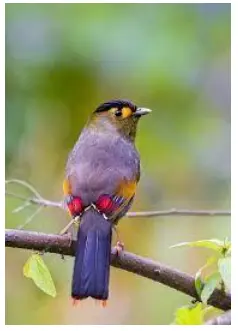
About Bugun Liocichla:
- A small babbler measuring only 20 cm, adorned with olive-grey plumage and a black cap.
- Captivating birdwatchers since its discovery as a new species in 2006.
- Exclusive to the Eaglenest Wildlife Sanctuary landscape, found nowhere else globally.
- Critically endangered, with only 14 individual birds sighted in the Braiduah village under the Singchung sub-division.
- A significant conservation milestone achieved as the Arunachal Pradesh government officially designates Braiduah Community Reserve under the Wildlife Protection Act, 1972, situated adjacent to the Eaglenest Wildlife Sanctuary.
Key facts about Bugun Tribe:
- Originating from Tibet via East Kameng, Arunachal Pradesh, the Buguns have distinct geographical boundaries and a unique language called Khowa.
- Known historically as "Shisung-Rubai," they deeply value their natural environment, intertwined with their daily lives.
- Traditionally constructing houses with bamboo and wood, featuring a stone base.
- Renowned for their agricultural prowess and expertise in extracting oil from the local wood species, Chiblem.
- Governed by the Nimiang, their socio-political administrative decision-making body.
- Celebrating the "Pham-Kho" annually, Buguns practice endogamy, marrying within their community.
Source: DH
World Air Quality Report 2023
In News: According to the latest findings of the World Air Quality Report 2023, Delhi emerged as the capital city with the most severe air pollution.
About World Air Quality Report 2023
- The World Air Quality Report 2023 is published annually by the Swiss organization IQAir.
- It compiles data from 7,812 locations across 134 countries, regions, and territories.
- Highlights
- India ranked third-worst globally in terms of average annual particulate matter 2.5 (PM2.5) concentration, with an average of 54.4 micrograms per cubic meter.
- India's air quality was inferior to only Bangladesh and Pakistan among its neighboring countries.
- Bangladesh maintained its position as the most polluted country globally, with an average PM2.5 concentration of 79.9 micrograms per cubic meter, while Pakistan ranked second with 73.7 micrograms per cubic meter.
- Delhi was identified as the most polluted capital city globally for the fourth consecutive year.
- Begusarai in Bihar was labeled as the world's most polluted metropolitan area.
- Ten out of the top 11 most polluted cities worldwide are located in India, with Lahore in Pakistan being the only exception.
- Approximately 96 percent of India's population is exposed to PM2.5 levels exceeding the WHO annual PM2.5 guideline by more than seven times.
- About Particulate Matter (PM)
- PM consists of solid particles and liquid droplets suspended in the air.
- It originates from various sources, including burning activities and dust-generating processes.
- PM comes in different sizes, with larger particles primarily originating from soil and smaller particles resulting from the combustion of fossil fuels such as gasoline, diesel, and coal.
- It is categorized into primary and secondary PM, with primary PM being directly emitted from sources like smokestacks and tailpipes, while secondary PM forms through chemical reactions involving gaseous emissions.
Source: Abvp
Wearable Technology
In News: Earlier this year, Samsung unveiled the Galaxy Ring, a new smart ring-shaped wearable device, during its Galaxy Unpacked event.
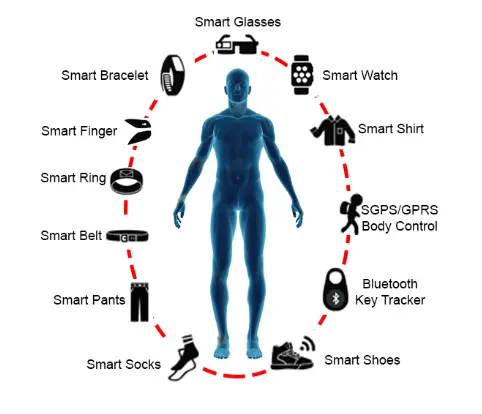
About Wearable Technology
- Definition
- Wearable technology, or "wearables," encompasses electronic devices worn as accessories, integrated into clothing, implanted in the body, or tattooed on the skin.
- Variety
- Wearable devices come in various forms, including smart watches, fitness trackers, sports watches, head-mounted displays, smart jewelry, smart clothing, and implantable devices.
- Components
- These devices typically include sensors, software, and connectivity technology to gather and transmit data.
- Functionality
- Sensors collect user data, which is then processed and transmitted wirelessly to a device with computing capabilities. This ecosystem operates within the Internet of Things (IoT) framework, akin to smart home technology.
- Benefits
- Wearable devices offer personalized data insights, such as smart rings utilizing capillary readings for accuracy and boasting longer battery life compared to smartwatches.
- Drawbacks
- While smart rings provide advantages in certain aspects, they lack features commonly found in smartwatches, such as GPS and a screen.
Source: ET
Leveraging NFHS Data for Women’s Financial Inclusion Policy
In News: Financial inclusion is vital for SDGs, but disparities remain in India, as per the Global Gender Gap Report 2023. Assessing women's financial inclusion using data from sources like the World Bank and NFHS is crucial.
Global Progress in Financial Inclusion
- Financial inclusion is recognized as a vital catalyst for global economic growth, with India making significant advancements in this arena.
- The World Bank's Global Findex Database highlights a substantial increase in adult ownership of bank accounts globally from 2011 to 2020, with India witnessing a remarkable rise of 42 percentage points during this period.
- This surge underscores the effectiveness of initiatives aimed at expanding access to financial services, especially for marginalized populations such as women.
Impact of Government Initiatives on Financial Inclusion
- Reduced Gender Gap in Account Ownership
- India's efforts to promote financial inclusion have resulted in a significant reduction in the gender gap in account ownership.
- The introduction of the Pradhan Mantri Jan Dhan Yojana (PMJDY) in 2014 has played a pivotal role in this achievement, aiming to provide universal access to banking services, including women in rural and urban areas.
- Instrumental in Women’s Economic Empowerment
- Government initiatives like the Deendayal Antyodaya Yojana and the National Rural Livelihood Mission (DAY-NRLM) have been crucial in fostering women's economic empowerment.
- These programs offer skill development, entrepreneurship training, and access to credit, enabling women to establish sustainable livelihoods.
- Broader Impact of Financial Inclusion on Women's Empowerment
- Financial inclusion extends beyond access to bank accounts, empowering women economically by providing avenues for savings, credit, and investment.
- Increased financial access enhances women's resilience to economic shocks, contributing to greater household welfare and stability.
Insights from NFHS Data on Financial Inclusion Progress
- Financial Autonomy and Decision-making
- NFHS data indicates a notable improvement in women's financial autonomy, with an increasing number exercising control over financial resources within their households.
- Awareness and Utilization of Micro-Credit Programs
- Micro-credit schemes play a pivotal role in supporting women entrepreneurs, with NFHS surveys reflecting growing awareness and utilization of these programs.
- Access and Utilization of Formal Banking Services
- Factors such as education, occupation, and access to electronic media influence women's access to formal banking services, highlighting the importance of targeted interventions to address disparities.
Challenges and Future Directions
- Addressing Financial Literacy Gaps
- Enhancing financial literacy through education and awareness campaigns is essential to empower individuals to make informed financial decisions.
- Bridging the Digital Divide
- Expanding digital infrastructure and promoting digital literacy are imperative to ensure equitable access to digital financial services.
- Promoting Inclusivity of Marginalized Communities
- Tailored interventions and affirmative action programs are needed to address barriers faced by marginalized groups, including women, minorities, and persons with disabilities.
- Advancing through Multi-stakeholder Collaboration
- Collaborative efforts between government agencies, financial institutions, civil society organizations, and grassroots initiatives are crucial to overcoming challenges and advancing financial inclusion.
Conclusion
- Advancing financial inclusion for women in India is essential for inclusive growth and sustainable development.
- While initiatives like PMJDY and DAY-NRLM have laid a strong foundation, concerted efforts are needed to address existing disparities and unlock the full potential of women's economic participation.
Source: IE
Share the article
Edukemy’s Current Affairs Quiz is published with multiple choice questions for UPSC exams
MCQ
Get Latest Updates on Offers, Event dates, and free Mentorship sessions.

Get in touch with our Expert Academic Counsellors 👋
Frequently Asked Questions
UPSC Daily Current Affairs focuses on learning current events on a daily basis. An aspirant needs to study regular and updated information about current events, news, and relevant topics that are important for UPSC aspirants. It covers national and international affairs, government policies, socio-economic issues, science and technology advancements, and more.
UPSC Daily Current Affairs provides aspirants with a concise and comprehensive overview of the latest happenings and developments across various fields. It helps aspirants stay updated with current affairs and provides them with valuable insights and analysis, which are essential for answering questions in the UPSC examinations. It enhances their knowledge, analytical skills, and ability to connect current affairs with the UPSC syllabus.
UPSC Daily Current Affairs covers a wide range of topics, including politics, economics, science and technology, environment, social issues, governance, international relations, and more. It offers news summaries, in-depth analyses, editorials, opinion pieces, and relevant study materials. It also provides practice questions and quizzes to help aspirants test their understanding of current affairs.
Edukemy's UPSC Daily Current Affairs can be accessed through:
- UPSC Daily Current Affairs can be accessed through Current Affairs tab at the top of the Main Page of Edukemy.
- Edukemy Mobile app: The Daily Current Affairs can also be access through Edukemy Mobile App.
- Social media: Follow Edukemy’s official social media accounts or pages that provide UPSC Daily Current Affairs updates, including Facebook, Twitter, or Telegram channels.


